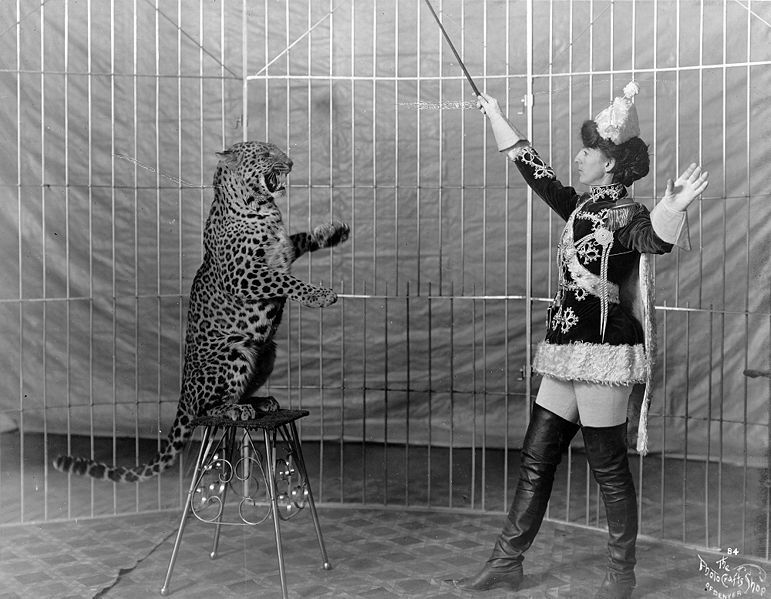
Okay, so everyone seems to want to label animal training these days.
Personally, I view a lot of it simply as marketing strategy.
Make up or alter a name–and market it as a new way of training.
There isn’t a one-size-fits-all type of animal training that works for everyone.
Plus, the biggest problem facing animal trainers who work with people and their pets (or charges if it is a zoological or marine park) is if they can get their human students to successfully replicate the training strategies.
In addition, you have to ask–do the pet owners or animal handlers/caretakers have the skill set to skillfully use the tools of the trade?
There is the problem–most don’t.
Good animal trainers have to be able to train the amateur (or novice) to train the animal so they can maintain the newly established behaviors or to achieve the behavior goals.
This is what most people forget.
Any trainer can train, but to impart those skills to another is what makes a system or animal trainer stand out above the others.
Exposure helps too.
People (or groups) want to align themselves to a certain type of process or specific tools when it comes to training OR they want to take advantage of a label.
I’ve seen a lot of it over the years.
In fact, one guy trademarked a common term and then “asked” me to refrain from using it in an article back in the mid-1990s—an article where I questioned it as being an innovation or a marketing strategy.
Silly me. LOL
So, I doubt I know all the labels when it comes to training but here is how I tend to categorize the types of training and I am counting on you to include yours (or others you may have heard about) in the comments below.
I’m also not going to get in-depth into these but instead just give you a quick look into how I categorize them.
Traditional Training
When it comes to training that is passed down over time and through tradition, I call it traditional training.
Often you see trainers serve an apprenticeship or get personal mentoring from another trainer.
For instance, in the dog world a lot of people view traditional training methods as those that use tools such as choke chains, prong collars and other long established dog training tools.
In the wild animal realm, a lot of traditional training had roots in ancient practices (falconry, elephant training) or in management of private menageries and the circus.
The equine community also has traditional methodology and tools that have been passed down for eons.
Relationship Training
Relationship training was being cleverly marketed as “affection training” when I started my career but it simply used behavior modification strategies along with some traditional methodology.
The key difference was that it focused on building the trust relationships with the wild animals so that each trainer not only knew the individual but also worked at understanding the natural history and so the predispositions of the species/breed in general.
I’ve seen people marketing this lately but don’t really view it as a particular strategy on its own.
Clicker Training
Often mislabeled as positive reinforcement training, the clicker training movement really just uses a secondary reinforcer (other than the voice) to “mark” a correct response. (Read some of my animal training series if you want to learn more.)
Expanded from training methods of long ago, they began to get popularized in an innovative zoo in the 1800s and left the laboratory in the 1940s to be used with a variety of species by the Bailey’s. (Whose kids were my classmates in the college animal training and management program at the same time I was.)
This type of training has moved into more main stream visibility in the marine mammal training world, captive wildlife realm, and most recently in the dog and livestock training realms.
Natural Training
Back in the 1980s “natural training” became the buzz word. I am seeing it pop up again here and there.
But really this type of training was more closely aligned with understanding the natural behavior patterns important in relationship training.
The rule of thumb was that by mimicking those behavior pattens in your work with an animal–you’d better communicate or manipulate the critter.
In some cases, the advice was to act like another animal would.
Strategic Social Typing
Social style typing isn’t really a training methodology but it does have influence on training–which is why I mention it.
Social styles identify human predispositions to moving through life, to learning and can help indicate reactions under stress.
I find typing applicable to animals as well and tend to put them into four categories.
There are specific trends I outlined in early articles in my zoological columns and my book–but I found that Pavlov may have identified similar trends back in the early 1900s.
By identifying the particular social predisposition of an animal, it can be more easily worked with through the selection of techniques or strategies that are more palatable with the animal.
“Insert Name” Training
You get to list yours in the comments below!
Yes, yes, I have more to say…
 Earlier in the week I began posting my thoughts on recent questions answered by some of my readers.
Earlier in the week I began posting my thoughts on recent questions answered by some of my readers.
